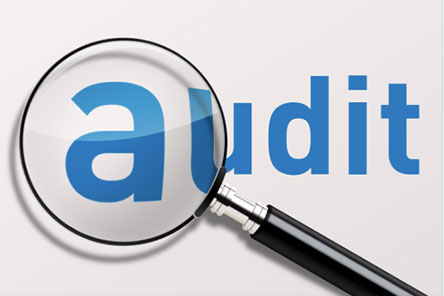
by John McCarthy Consulting Ltd. | Oct 21, 2016 | News
In this article, we consider practical tips for applying the requirements of Section 35 of FRS 102.
The Financial Reporting Council issued a report called the Annual Review of Corporate Reporting 2015/2016 on 21 October 2016 encouraging smaller entities to ‘start their planning as soon as possible in order to ensure they are prepared for a smooth transition’.
In this report, the FRC stated that ‘small entities will also be applying FRS102 for the first time from 1 January 2016, which may pose some challenges for preparers, but should improve reporting in certain areas, as well as offering opportunities to reconsider the necessary disclosures. Anecdotal evidence suggests that some of the larger private companies applying FRS 102 from 1 January 2015 could have started their planning for transition earlier; any entities yet to transition to new standards should start their planning as soon as possible to ensure they are prepared for a smooth transition.’
This article assumes that readers have used the FRSSE (2015) for the year ended 31 December 2015 and will now be adopting FRS 102 for the first time for year ended 31 December 2016.
Review of existing accounting policies
Companies will need to perform a detailed review of whether their current accounting policies meet the requirements of FRS 102 Financial Reporting Standard applicable in the Irish and Ireland, and whether change is necessary or desirable. and changes in accounting policy will be inevitable.
In some cases, the requirements under FRS 102 will be different from previous Irish GAAP However, transition to FRS 102 can also provide an opportunity to look again at current accounting policies and reconsider their appropriateness to the business. In some cases, there will also be accounting rules that were not previously in place e.g. the rule about recording transactions in the functional currency which can be in a currency other than the Euro, if the company’s sales are denominated mostly in sterling or dollars.
Time is of the essence
FRS 102 generally requires retrospective application (in our example the transition date will be 1 January 2015 and therefore the comparatives for the year ended 31 December 2015 will need revised under the new rules). It is very important to identify those areas most likely to have a significant impact on the financial statements and actions which might be taken to ease the burden, for example deciding which of the eighteen exemptions (currently available) to take.
You need to identify those actions which are time-critical, that is areas where action (or inaction) at transition will have a direct impact on the accounting treatment and the options available. Special care will need to be taken by entities that have hedging arrangements or defined benefit pension schemes.
Gathering information for restatement of comparatives
Don’t underestimate the challenge of restating comparative information, including numerical and narrative disclosures, on first-time adoption of FRS 102. There may be disclosures which were not required previously (e.g. the statement of cash flows) or which are now required in greater depth e.g. changes to the accounting policies on turnover and stock. It is hoped that the new companies Act (when enacted) will update the Companies Ct, 2014 and will allow smaller companies avail of the exemption form the statement of cash flows.
This information will generally be easier to gather at the time a transaction takes place or close the date a balance arises, rather than when the first FRS 102 financial statements are being prepared.

by John McCarthy Consulting Ltd. | Oct 14, 2016 | News
There are a number of key differences between previous Irish Generally Accepted Accounting Practice (GAAP) and FRS 102. Areas where the accounting treatment is substantially different from previous GAAP include, but are not limited to:
- financial instruments, especially long terms loans;
- investment properties;
- business combinations;
- deferred tax and
- defined benefit pension schemes.
Which differences will have the biggest impact will depend entirely on the individual circumstances of each entity.
Auditors should consider at an early stage both what they should expect the entities they are auditing to be doing and also what they should be doing themselves. Auditors should take early action and examine what preparations the entities they are auditing have made for transition, if they have not done so already.
Some of the key aspects that auditors will need will do to gain an appropriate level of understanding will include the following elements of management’s implementation:
- Clarify the responsibilities of management including carrying out an analysis of the impact on the business and ensuring appropriate plans are in place;
- Establish how the transition has been handled (e.g. is the functional currency correctly identified?);
- Communicate the changes with shareholders, other stakeholders including suppliers, employees, the Revenue Commissioners and banks (e.g. how have banks established the fair values of financial instruments supplied by the bank to the company?);
- Assess the need for staff training and up to date audit work programmes and software at an early date;
- Identify differences between current accounting policies and FRS 102 and
- Identify changes in financial data and additional information (e.g. client holiday pay data) to meet the revised requirements.

by John McCarthy Consulting Ltd. | Oct 14, 2016 | News
As is already widely known the Department of Foreign Affairs has withheld €10.1 million in aid for the charity Goal since it learned of a USAID investigation at Goal USA in April 2016 into its operation in Syria. Goal is accused of being involved in a bribery scandal involving humanitarian contracts in Syria.
While there is no mention of money laundering or terrorist financing in this story, it is only a matter of time that some charity will become ensnared in accusations of funding terrorism either directly or indirectly.
In a separate AML development, the NI Charity Commissioners consulted earlier in 2016 with Charities in Northern Ireland including ‘matters leading to the knowledge or suspicion that the charity or charitable funds have been used for money laundering or such funds are the proceeds of serious organised crime or that the charity is a conduit for criminal activity’. The suggestion is that accountants and/or auditors of charities would be required to report suspicions of AML to the NI Charities Regulator.

by John McCarthy Consulting Ltd. | Oct 14, 2016 | News
The accounting rules for changes in estimates are in section 10.15 of the standard. They are dealt with prospectively i.e. by including the effect in profit or loss in the period of the change and, if relevant, in future periods. Adoption of the new FRS 102 standard is not an opportunity to revisit accounting estimates retrospectively (thereby pushing changes through reserves rather than recognising them in profit).
The standard gives very little explanation as to what an ‘estimate’ actually is.
Typical estimates might include:
- Determining an impairment for doubtful debts;
- Impairments for slow-moving or obsolete stock;
- Estimating the useful life of tangible fixed assets;
- Fair values of financial assets and liabilities;
- Recoverability of deferred tax assets; and
- Estimating the correct value for warranty provisions.
Related to the above are two completely new disclosures required in FRS 102 that were not specifically addressed in old GAAP. They are:
- Information about judgements that management has made in applying the accounting policies and that have the most significant effect on the amounts recognised in the financial statements. FRS102 paragraph 8.6.
- Information about key sources of estimation uncertainty that have a significant risk of causing a material adjustment to the carrying amounts of assets and liabilities within the next financial year, including details of their nature and carrying amounts. FRS102 paragraph 8.7.
Many sets of FRS 102 financial statements that we have reviewed in the last 12 months don’t need any transition journal entry adjustments but are lacking sufficient information about judgements and key sources of estimation uncertainty. Greater care and attention is needed by preparers in these particular areas in order to fully comply with the standard.

by John McCarthy Consulting Ltd. | Oct 7, 2016 | News
On 1 July 2016 a new International Education Standard (IES) issued by the International Accounting Education Standards Board (IAESB), part of the International Federation of Accountants (IFAC) came into force. IES 8 sets new professional competence requirements for audit engagement partners. In addition, a new version of the International Standard on Quality Control 1 (ISQC 1) was issued by the Financial Reporting Council (FRC) in June 2016. IES 8 supplements the CPD component of ISQC 1. This blog focuses on IES 8.
The new IES builds on the existing focus on:
professional competence which is already a requirement of legislation;
professional body licensing requirements; and
statutory auditors’ internal due diligence.
The revised standard may require audit partners to document evidence that CPD activity undertaken has contributed to the development and maintenance of the professional competence required for their role as an Audit Engagement Partner.
The learning outcomes to be achieved include, but are not limited to, areas such as:
- technical competence
- professional skills
- professional values
- ethics and
- attitudes.
Audit Engagement Partners are expected to undertake CPD targeted to those aspects of their role which are in need of update. This may include industry specific CPD.
In their review work from 1 July 2016, CARB will check that firms have appropriate procedures in place to meet the requirements of IES 8 and that selected engagement partners and other RIs are using a planned programme of CPD to ensure the maintain the competencies required by IES 8.
A new Quality Control Procedures Manual under the ISQC1 (Revised) is available to purchase (including the IES 8 amendment) for €125 + VAT at https://jmcc.ie/d7/content/publications

by John McCarthy Consulting Ltd. | Sep 23, 2016 | News
We carry out regular FRS 102 compliance reviews for client accounting firms. Here is a selection of some of the most common findings.
Balance sheet
- ‘Equity’ is often labelled as ‘Called-up share capital’ when it should be correctly labelled as ‘Called-up share capital presented as equity’ and Note 18 to the financial statements must correspond accordingly.
- One cannot use the terms ‘Non-Current Assets’, Trade Receivables’ or ‘Trade Payables’ under the Companies Act, 2014 (CA 2014).
Accounting Policies
The financial statements are required under section 3.24 FRS 102 to (a) disclose the legal form of the entity, its country of incorporation and the address of its registered office (or principal place of business, if different from the registered office); and (b) a description of the nature of the entity’s operations and its principal activities, unless this is disclosed in the business review (or similar statement) accompanying the financial statements.
If the above information is shown elsewhere, then one may cross-reference it to that location in the financial statements.
Turnover
In the accounting policy note for ‘turnover’ the words ‘fair value’ need to be included and worded to indicate that the accruals concept was used (‘received and receivable’) in order to comply with Section 23 of FRS 102 e.g. something like: ‘Turnover comprises of the fair value of sales income of the company received and receivable during the year, excluding Value Added Tax’.
The accounting policy for ‘Property, Plant & Equipment’ often needs re-worded to use the words ‘Tangible Fixed Assets’ under the CA 2014.
Provision for doubtful debts
Some financial statements make no mention of a policy on bad debts. The language needs to be compatible with FRS 102. See the text in paragraphs 11.22 to 11.24 in the standard and ensure to use language like ‘objective evidence’ rather than saying the estimate is based on ‘historical experience’ which might not necessarily be objective.
Stock – no such thing any more as ‘net realisable value’. The new terminology is ‘stock is stated at the lower of cost and estimated selling price less costs to complete and sell’.
To hear more about these types of issues and get up to date with FSR 102 come to our forthcoming FRS 102 courses in Dublin.
For more details and booking visit https://jmcc.ie/d7/content/cpd-courses










